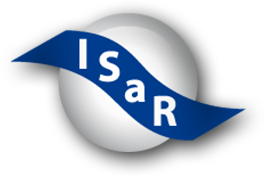Driving With Hemianopia VI: Peripheral Prisms and Perceptual-Motor Training Improve Detection in a Driving Simulator
empfehlen| Titel: | Driving With Hemianopia VI: Peripheral Prisms and Perceptual-Motor Training Improve Detection in a Driving Simulator |
|---|---|
| Form: | Aufsatz / Artikel |
| Autor(en): | Alex Bowers,Eliezer Peli,Kevin Houston,Robert B. Goldstein |
| Jahr: | 2018 |
| Verlag Ort: | Cambridge |
| Veröffentlicht in: | Harvard Medical School |
| Auszug: | "Purpose: Drivers with homonymous hemianopia (HH) were previously found to have impaired detection of blind-side hazards, yet in many jurisdictions they may obtain a license. We evaluated whether oblique 57Δ peripheral prisms (p-prisms) and perceptual-motor training improved blind-side detection rates. Methods: Patients with HH (n = 11) wore p-prisms for 2 weeks and then received perceptual-motor training (six visits) detecting and touching stimuli in the prism-expanded vision. In a driving simulator, patients drove and pressed the horn upon detection of pedestrians who ran toward the roadway (26 from each side): (1) without p-prisms at baseline; (2) with p-prisms after 2 weeks acclimation but before training; (3) with p-prisms after training; and (4) 3 months later. Results: P-prisms improved blind-side detection from 42% to 56%, which further improved after training to 72% (all P < 0.001). Blind-side timely responses (adequate time to have stopped) improved from 31% without to 44% with p-prisms (P < 0.001) and further improved with training to 55% (P = 0.02). At the 3-month follow-up, improvements from training were maintained for detection (65%; P = 0.02) but not timely responses (P = 0.725). There was wide between-subject variability in baseline detection performance and response to p-prisms. There were no negative effects of p-prisms on vehicle control or seeing-side performance. Conclusions: P-prisms improved detection with no negative effects, and training may provide additional benefit. Translational Relevance: In jurisdictions where people with HH are legally driving, these data aid in clinical decision making by providing evidence that p-prisms improve performance without negative effects." |





